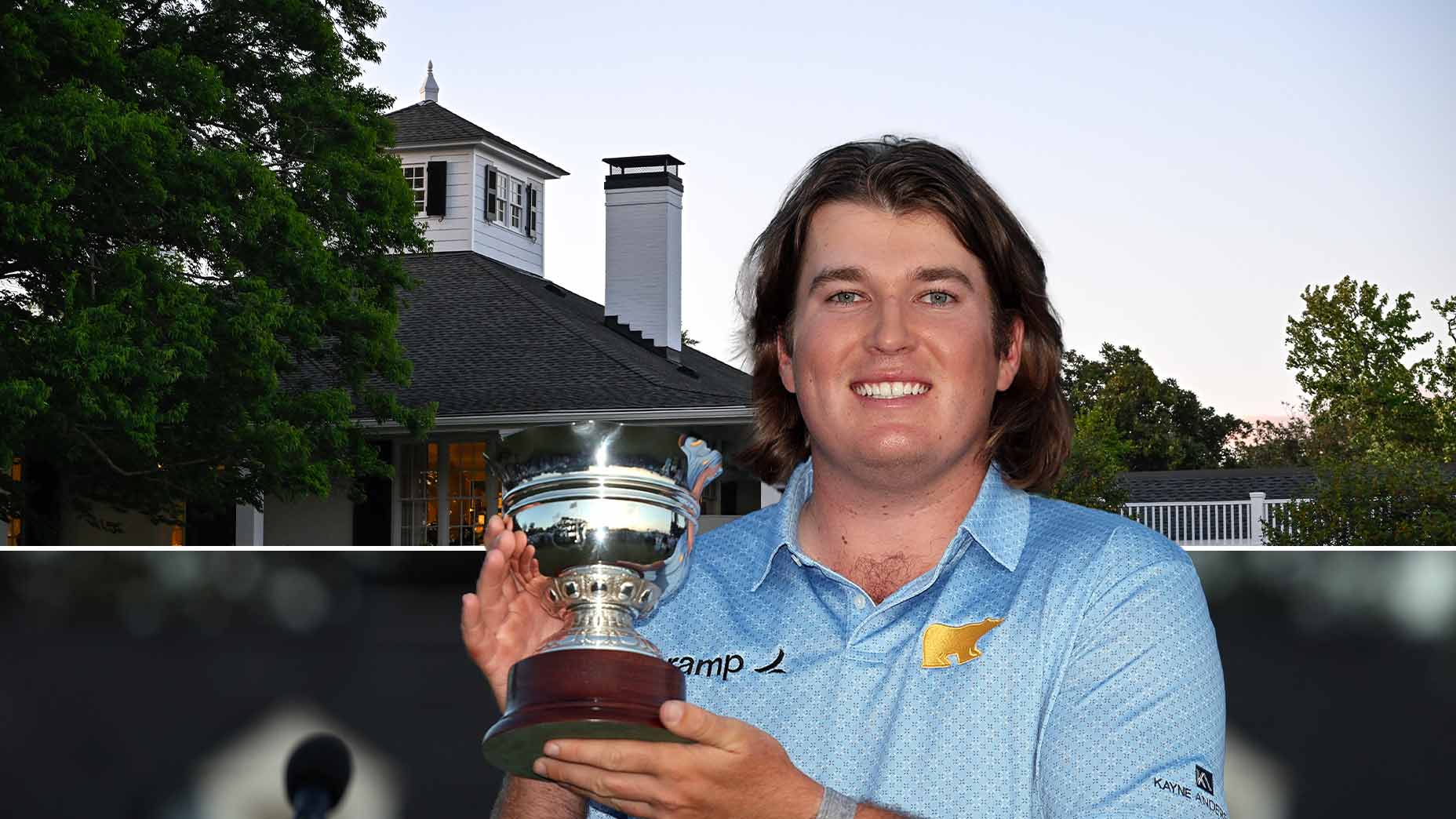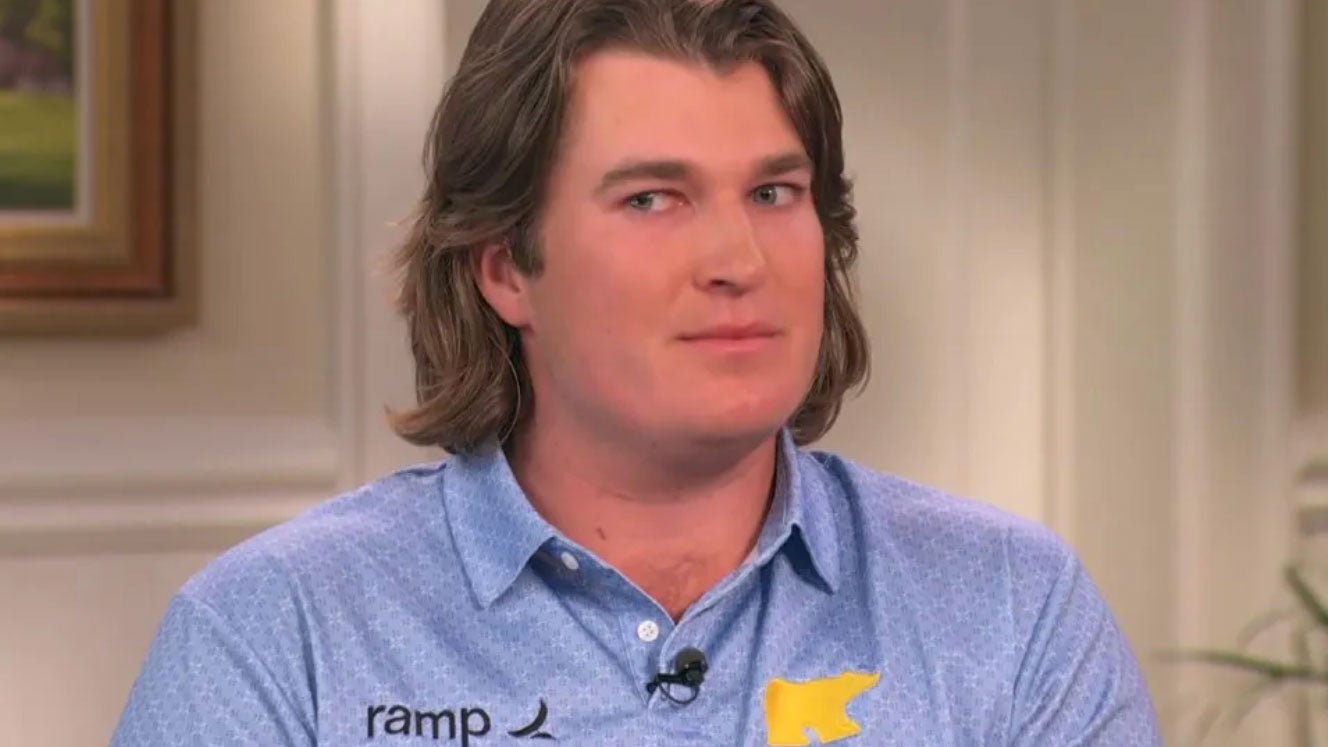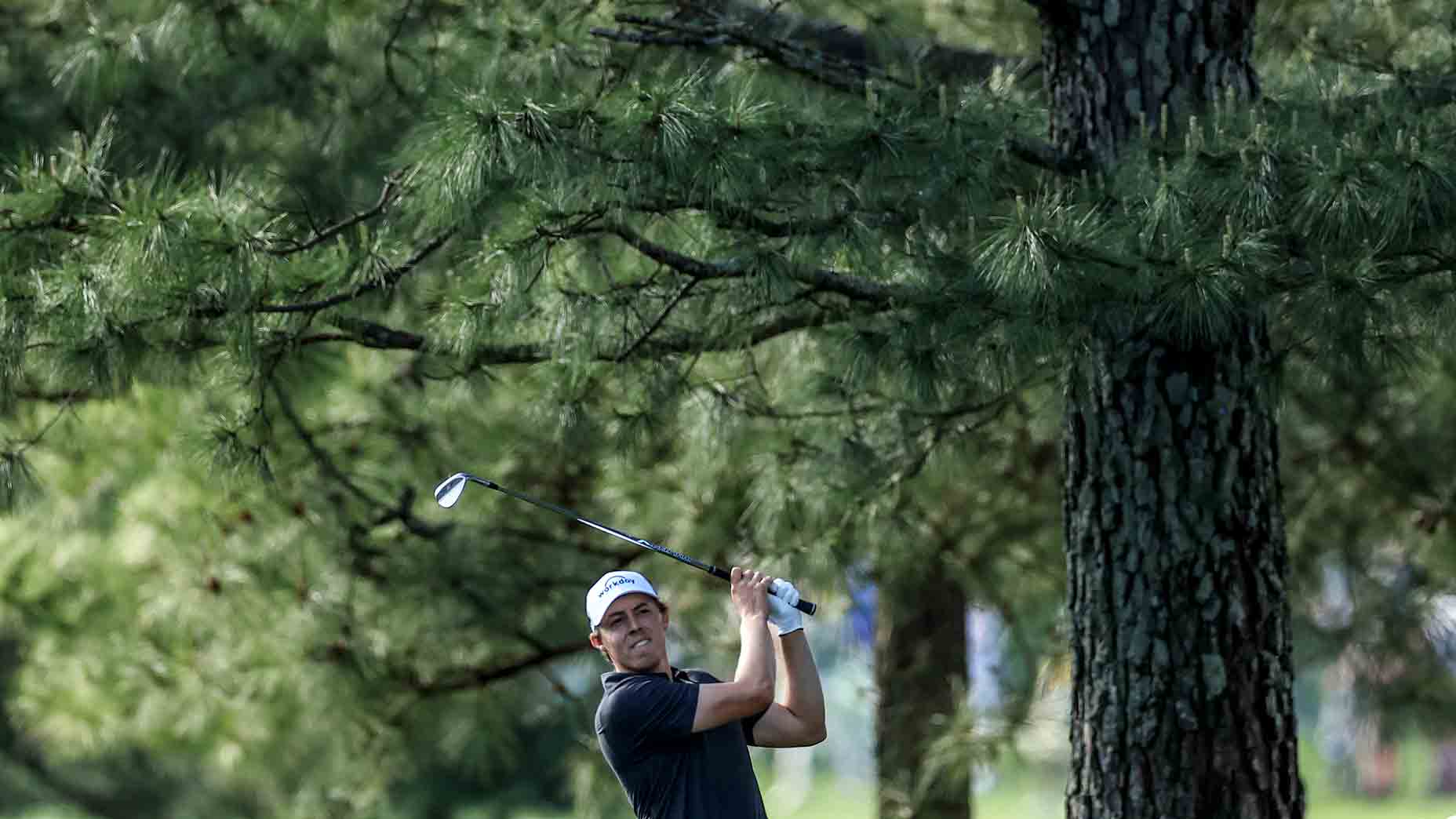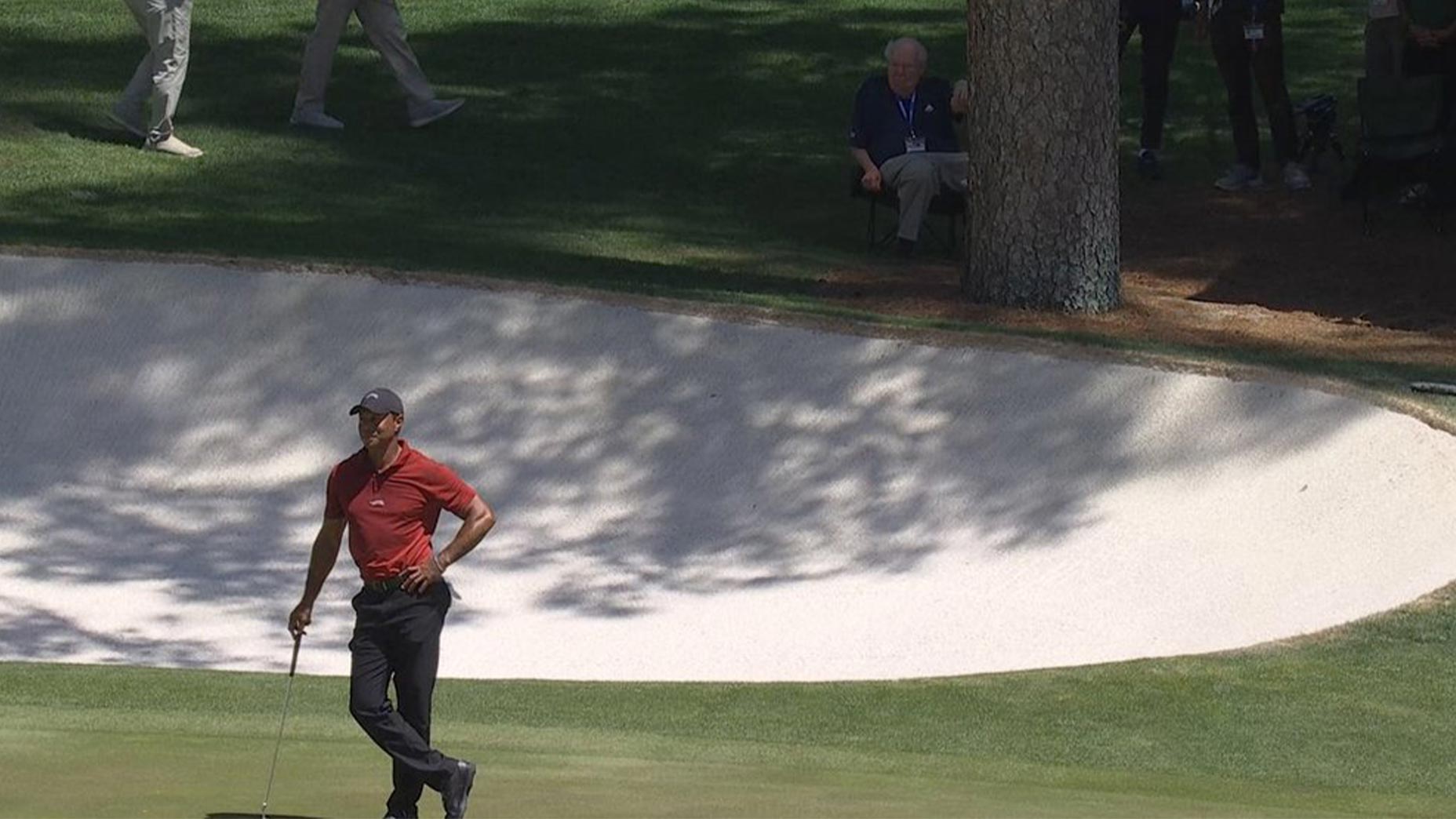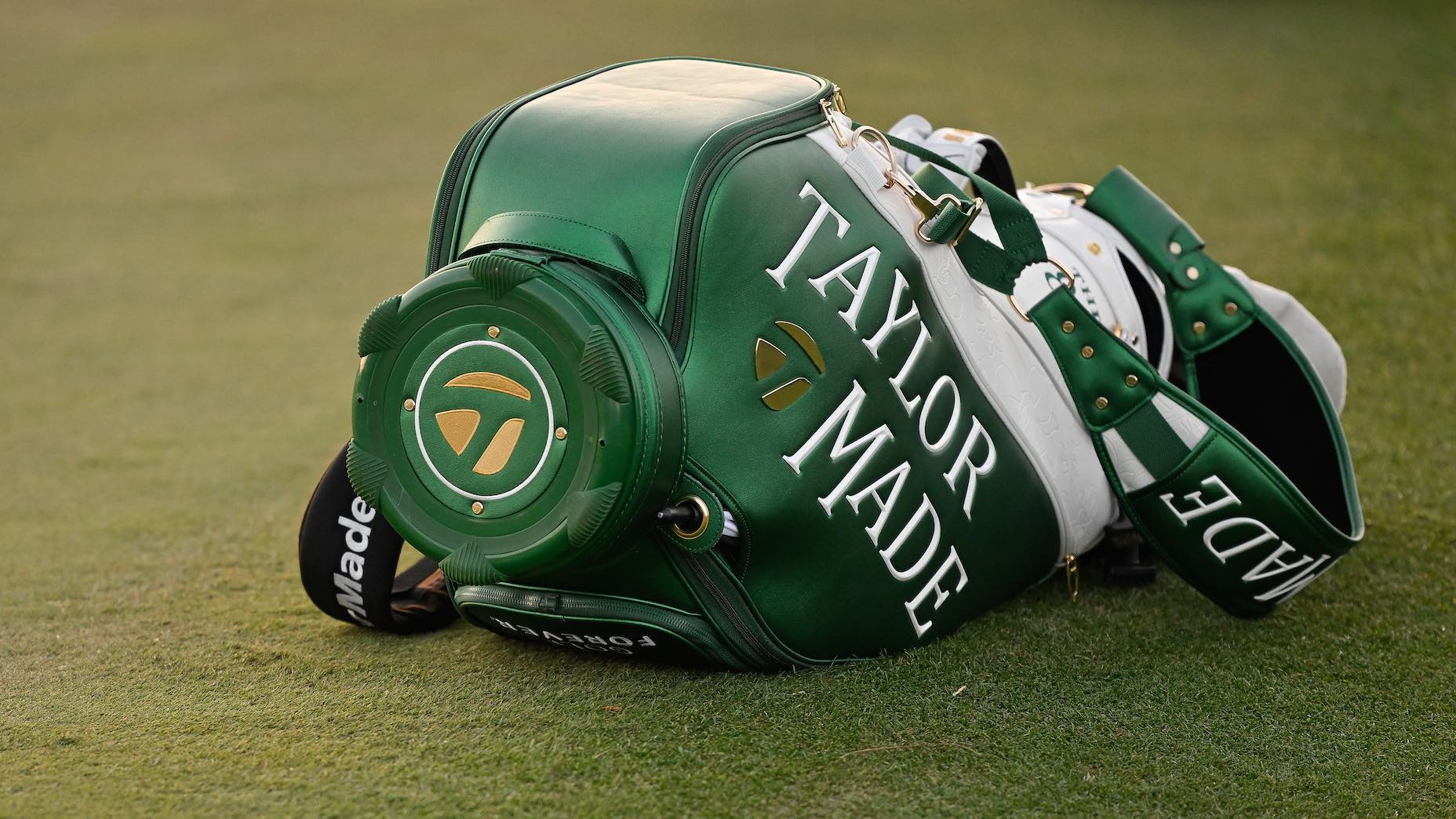Waiting for Verne Lundquist at the Masters, one last time
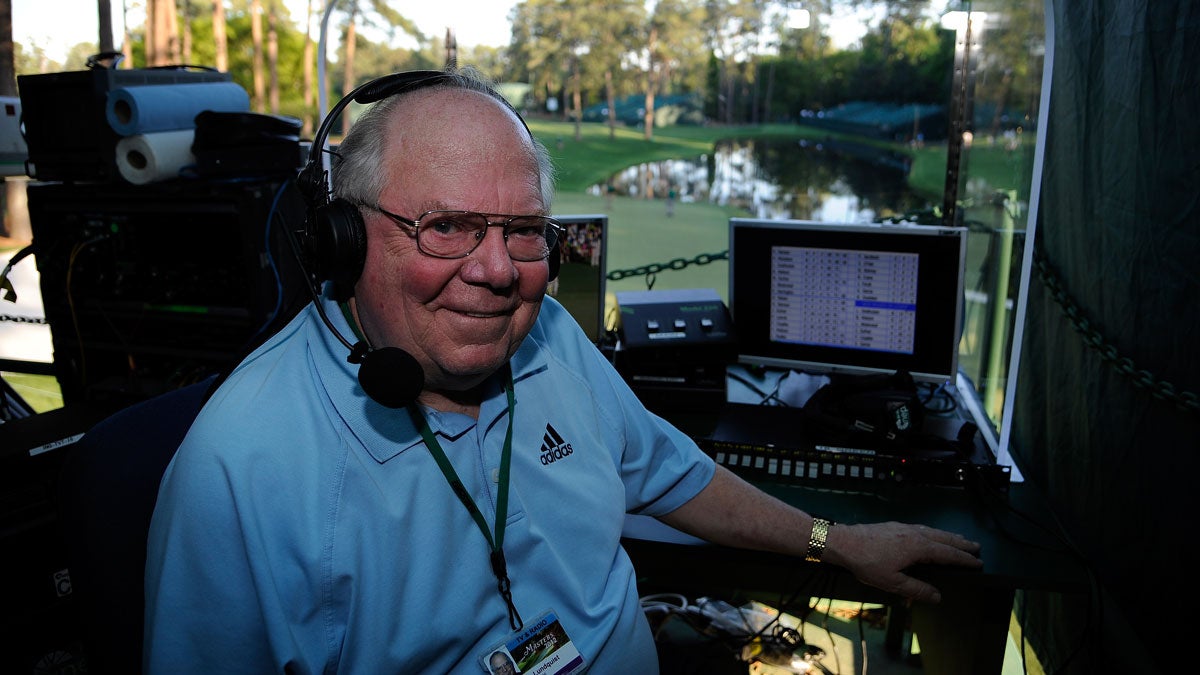
Verne Lundquist in his 16th hole perch at Augusta National.
getty images
AUGUSTA, Ga. — This was a new thing, on this Masters Sunday. It had never happened before, and it will never happen again. We were waiting on Verne.
Mr. Verne, to some children of the South, easier on the tongue than his Norwegian, Lutheran, oh-so-Minnesotan surname, Lundquist. But in your life, have you ever heard anybody — anybody other than Jim Nantz — say Verne Lundquist? Well, yes. But not too often.
It’s strange to think of how famous Verne is. Because, you know, he’s basically your grandfather. But a huge, huge number of people do know who Verne is. He’s a sports broadcaster. People love sports on TV, including the Masters, which Verne has worked for 40 years. Which means, a huge number of people, consciously or not, were waiting on Verne on Masters Sunday.
Tiger Woods came through 16, Verne’s longtime broadcasting hangout, early in the afternoon, before the CBS broadcast had started. Verne was sitting behind the green, in a folding chair, a cane by its side, in the shade of a Loblolly pine. Woods seemed almost surprised to see him there. He changed directions and veered off to greet him. Verne rose. They shook hands, had a warm and brief exchange. They’re linked forever, really. Tiger played shots and Verne described them. Both brought art to the task at hand.
IN YOUR LIFE —
Over the years and decades, Verne’s words eventually painted a self-portrait. The least unpretentiousness person on TV. If Verne had a bit, and he didn’t, it was this: He was normal. He was a guy. Just a guy.
Verne’s 83. He’s been at it for six decades. You’d have to be some kind of weird obsessive to keep track of it all, the college football and basketball games, the PGA Tour and LPGA events, all those NFL games. The 40 trips to Augusta. There’s no logbook of it all. That wouldn’t be Verne. Minnesota doesn’t truck in weird obsessives. Neither does Illinois, Iowa, Texas, Colorado, other states where he has logged years. Our vast American middle. He was born in 1940 and by 1950 he was in grammar school. A son of the middle class (his father was a pastor). Mid-century, mid-country. He’s represents a time and a place that feels safe, dependable and optimistic. He was never a brand. Oh, Lord no. What we saw in him was ourselves.
For most American golf fans, the closest they will come to Augusta National is to the CBS broadcast of the Masters. For most American golf fans, our path to the bottom of Augusta’s 16th hole is by way of Verne.
—have you ever seen anything like THAT?
You know that whole thing, if you follow the Masters as I think you do. Tiger Woods, 2005, second shot, 16th hole, a Nike ball, a final rotation, an unlikely birdie 2. Tiger’s mock turtleneck shirt, blood red for Sunday. Verne’s call. The Masters on CBS. It’s been in our lives forever.
On Sunday, all around the course, everybody knew Verne was working the tournament for the final time, even though nobody on campus had any idea what he was saying. Augusta National is a black hole of transmitted information. But the security officers on 16, in their black pants and white shirts with epaulets and clip-on black ties? They were talking about the leaderboard, the speed of the greens — and Verne’s farewell.
So was Kirk Sampson, an assistant AD at Auburn. I found myself standing next to him and talking with him about the leaderboard, the speed of the greens, and Verne’s farewell. Kirk identified Verne’s CBS spotter for me, a woman named Tracy, working beside Verne in the booth near the 16th green. Kirk knew Tracy because, for one week a year, he’s a CBS spotter, too. When the last twosome — Scottie Scheffler and Collin Morikawa — came through Kirk’s hole, the 7th, he walked down to 16.
In time, Scheffler and Morikawa came to 16. The final twosome of Verne Lundquist’s final Masters. Scheffler hit a beautiful tee shot and his ball finished maybe 10 feet from the hole, it looked to me. That’s part of the fun of actually watching the Masters in person. You’re doing a lot of guessing. Kirk and I guessed that Scheffler or Morikawa had hit shots into the water on 13, because it took so long for their scores to post. We could not have been more wrong. They both made birdies. Well, that’s in the tournament’s DNA. You make your best guess with the evidence at hand. Maybe it was 10 feet, maybe it was a little less or a little more. You don’t really know. You don’t what they’re saying on TV. Watching in person and watching on TV are both great experiences, but neither is anything like the other.
Scheffler made his putt for a birdie, that 10-footer, or whatever it was. Morikawa followed by making a putt for par. They hit their tee shots on 17. The crowd around 16 cleared out in a hurry. The hillside to the left of the hole emptied in minutes. All that was left were a 100 or 200 plastic cups.
A small group waited on the left side of the 17th tee, as close to Verne’s booth as you could get. Maybe 30 people were gathered there. A man named Ricky Herring, a builder, was there. His friend Rodney Lewis, an architect, was with him. They were waiting on Verne, waiting for Verne to emerge. “He represents a simpler time,” Herring told me. Lewis agreed. “A simpler time in the media, and just a simpler time. The heyday of golf. When I first started watching, Tiger was coming on. Nick Faldo was still playing. David Duval. Phil Mickelson.” Ricky Herring was getting into golf, and Verne Lundquist was his tour guide, taking him from 16th tee to the bottom of the 16th hole.
Five or 10 minutes passed and a zipper was pulled up in the middle of a green canvas wall. A minute or two passed, and out came Verne. He walked down a steep set of steps (not a ladder) with some assistance, a cane in his hand. He wore loose khaki pants, a dark blue CBS golf shirt. He had glasses on his nose, white tufts of hair above his ears, a shiny dome up top. Thirty or so people applauded him. “Thank you, guys,” he said. No fanfare, just admiration. “Thank you so much.”
His wife, Nancy, was waiting for him. They hugged. She got in one golf cart and he got in another and they were driven off.
A 16-year-old girl, Kyshana Otero-Ross, just off her final work shift in a concession stand by the 15th tee, was taking it all in. This was her first time at a golf tournament. She goes to high school in Augusta.
“I don’t mean to be ignorant, but what’s going on here?” she asked. I pointed in Verne’s direction and told Kyshana about his history at Augusta and CBS. I pointed out Nancy. I asked Kyshana how she saw the whole scene.
“I’d say she supported him his whole career,” Kyshana said. She watched them hold hands. “That’s true love.”
Later, I heard how Verne called Scheffler’s tee shot on 16. It was just a single word, but what a word it was:
“Hello.”
He drew it out and turned it into two long syllables.
Hell-low.
Like, what do we have here?
With a single word, he gave the shot, and the moment, its due.
Michael Bamberger welcomes your comments at Michael.Bamberger@Golf.com



